Layer upon layer of birds
We were in the Big Bend National Park area for four days and two of those days we spent birding. Aside from the usual research we did in advance of our trip (Steve lying on the living room floor studying a map or reading field guides) we hired Mark Flippo of Birding Big Bend to guide us for half a day on two days, birding different parts of the park. If we had waited to do this trip in a few more weeks, Steve would have done the full-day trip in the Chisos Mountains in the park with Mark to find the Colima Warbler. This is the only place in the U.S. where you can find that warbler, but alas, the warbler doesn’t arrive until mid-April.
The bird diversity in Big Bend has everything to do with elevation and if you think of it as birding in layers you’ll be able to approach birding the park in a logical and manageable way.
Rio Grande River Valley
At the lowest elevation is the Rio Grande River valley, which is a riparian environment with willows, cottonwoods, and mesquite which attract certain species, such as Lucy’s Warbler, Vermillion Flycatcher, and Golden-fronted Woodpecker. We spent a half day here, birding around the Cottonwood Campground and the Santa Elena Canyon.
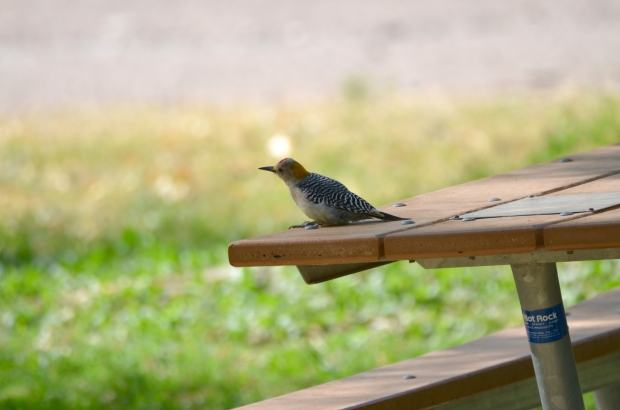
Golden-fronted Woodpecker (Picnic anyone?)
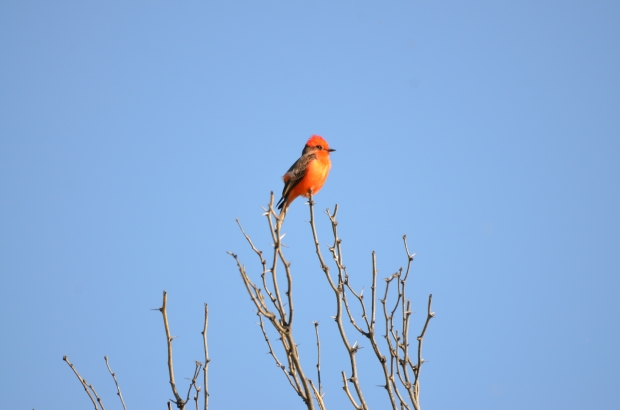
Vermillion Flycatcher (There were so many of these guys around that you started to ignore them after awhile.)

Red-naped Sapsucker (lifer for me!)

Great-horned Owl (One of the resident pair that hangs around Cottonwood Campground)
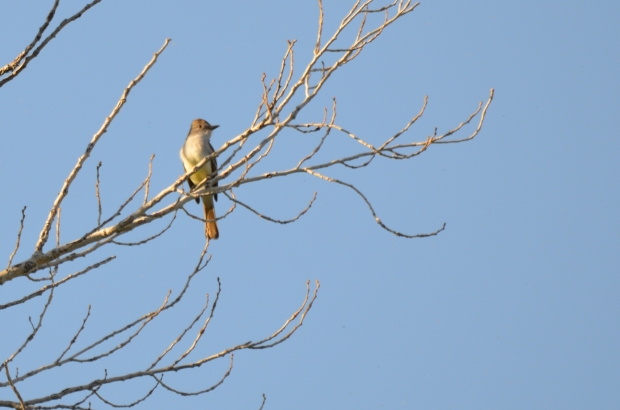
Ash-throated Flycatcher
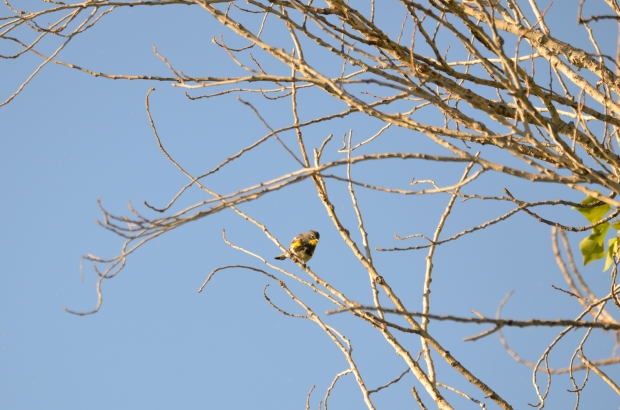
Yellow-rumped Warbler (Audubon’s)
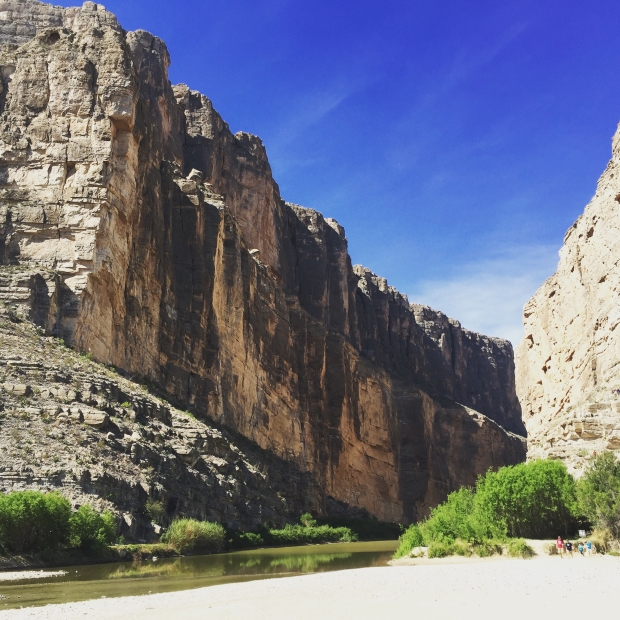
Santa Elena Canyon
Chihuahuan Desert
The next layer up is the largest ecosystem in the park—the Chihuahuan Desert. Big Bend touches the most northern part of this desert, which spans south to the states of Zacatecas, and San Luis Potosi in Mexico. It is here in this desert in Big Bend where you’ll find species like Cactus Wren and Greater Road Runner.
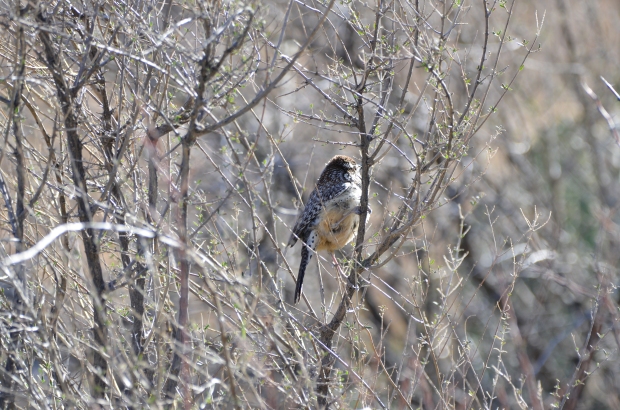
Cactus Wren (albeit a bit uncooperative)
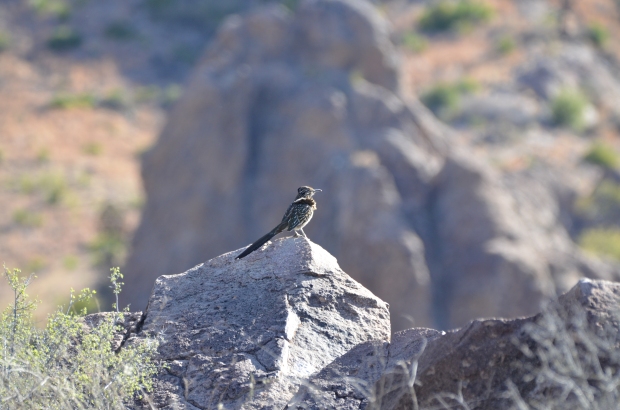
Greater Road Runner
Chisos Mountains
Higher up the mountains, such as in the Chisos Mountains, it’s more of an Oak/Pine forest where you will get species such as Mexican Jay, Scott’s Oriole, Canyon Towhee and at the very highest elevation at 7000 feet you’ll get the open pine forest where you’ll find the Colima Warbler and Mexican Whip-poor-will.
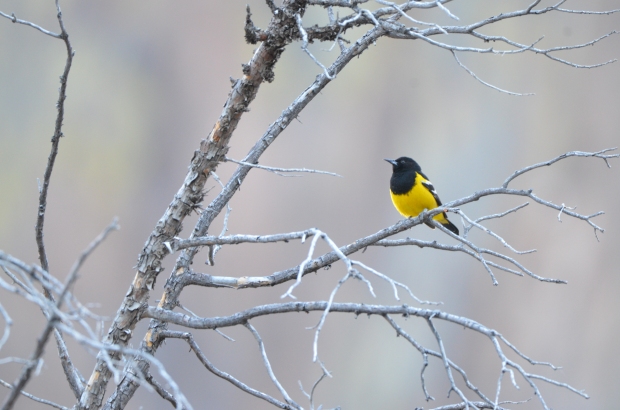
Scott’s Oriole (Fun fact: Oriole’s are in the icterid or blackbird family.)

Mexican Jay (not interested in letting me get an unobstructive photo).
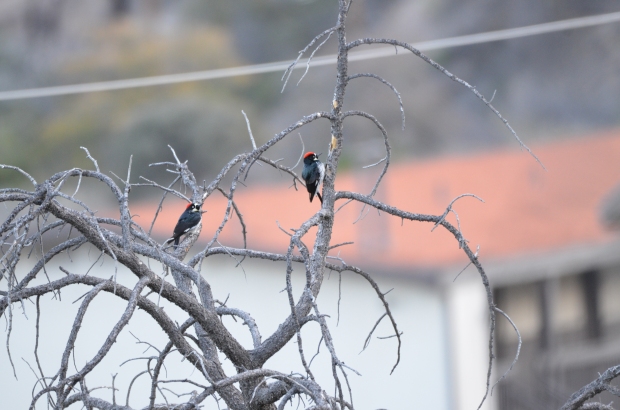
Pair of Acorn Woodpeckers
Birding Big Bend National Park was an absolute delight. We were a little early for the peak birding season (we were there the last week of March). If you want to hit the peak birding times, plan on April and May. Big Bend contains the most species of birds than any National Park in the U.S. (425 birds!) so it is indeed a mecca for birders. It’s not exactly convenient to get to (El Paso is the closest airport and it’s a good four hours away), and you’re not going to find the usual services you’re accustomed to finding (McDonald’s, Starbucks, Subway sandwich shops).
But you’ll find out once you get to Big Bend that you don’t need all those familiar restaurant and coffee shop chains.
Because you’ve come for the birds.

Birding Chisos Basin

Great post!
LikeLiked by 1 person
Thank you very much!
LikeLiked by 1 person
I like the way you organized this — sure makes me want to go there!
LikeLike
You should definitely make a trip there. It’s absolutely amazing. And it’s not nearly as crowded as a lot of the other national parks. You’ll feel like you have the whole park to yourself.
LikeLike
FANTASTIC!
LikeLike
Thank you, Julie. 🙂
LikeLiked by 1 person
Great shots! I think I probably took a picture of that same GHO. Big Bend is a dream. It’s why started our year there…great birding and wide open spaces!
LikeLike
HI, I camped at Big Bend last October. My first time in the park. It was great. Lots of new birds and experiences. Check out the free hot springs in the park.
LikeLike
I love the Vermilion Flycatcher perched at the very top branch of the tree. I want to be that bird.
LikeLike